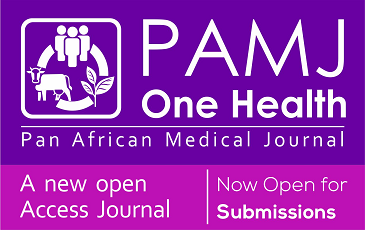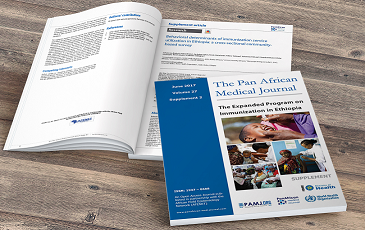Tolosa-hunt syndrome: unraveling painful ophthalmoplegia through imaging
Devyansh Nimodia, Pratapsingh Hanuman Parihar
Corresponding author: Devyansh Nimodia, Department of Radiodiagnosis, Datta Meghe Institute of Medical Sciences, Sawangi, Wardha, Maharashtra, India 
Received: 07 Mar 2025 - Accepted: 09 May 2025 - Published: 03 Nov 2025
Domain: Radiology
Keywords: Cavernous sinus, magnetic resonance imaging, ptosis
Funding: This work received no specific grant from any funding agency in the public, commercial, or not-for-profit sectors.
©Devyansh Nimodia et al. PAMJ Clinical Medicine (ISSN: 2707-2797). This is an Open Access article distributed under the terms of the Creative Commons Attribution International 4.0 License (https://creativecommons.org/licenses/by/4.0/), which permits unrestricted use, distribution, and reproduction in any medium, provided the original work is properly cited.
Cite this article: Devyansh Nimodia et al. Tolosa-hunt syndrome: unraveling painful ophthalmoplegia through imaging. PAMJ Clinical Medicine. 2025;19:13. [doi: 10.11604/pamj-cm.2025.19.13.47155]
Available online at: https://www.clinical-medicine.panafrican-med-journal.com//content/article/19/13/full
Images in clinical medicine 
Tolosa-hunt syndrome: unraveling painful ophthalmoplegia through imaging
Tolosa-hunt syndrome: unraveling painful ophthalmoplegia through imaging
&Corresponding author
Unilateral orbital pain and oculomotor paresis are hallmark features of Tolosa-Hunt Syndrome - a rare cause of painful ophthalmoplegia that demonstrates rapid symptom relief following corticosteroid therapy. Approximately 40% of affected individuals experience recurrence, either ipsilaterally or contralaterally. We present a case of a 60-year-old woman with complaints of left-sided retro-orbital pain accompanied by eyelid drooping and diplopia that had started two weeks prior. Her past and family history were negative. Magnetic resonance imaging of the brain revealed abnormal enlargement of the left cavernous sinus, appearing hypointense on T1WI and hyperintense on T2WI (A, B), with an incidental finding of an empty sella (C). On neurological examination, the patient had hypoesthesia in the trigeminal nerve´s V1 distribution and left ipsilateral third and fourth cranial nerve palsy (D). The enlarged left cavernous sinus showed post-contrast enhancement (E, F) extending through the superior orbital fissure into the orbital apex. The left optic nerve appeared mildly tortuous and enlarged, with intraocular kinking and hyperintensity on T2-weighted images, along with subtle contrast enhancement (G). A comprehensive evaluation ruled out alternative causes involving the cavernous sinus. The patient's symptoms resolved within 72 hours of initiating corticosteroid therapy, supporting a diagnosis of Tolosa-Hunt Syndrome secondary to idiopathic granulomatous inflammation of the cavernous sinus. She was advised to have regular follow-ups due to the risk of recurrence.
Figure 1: magnetic resonance imaging brain findings: (A, B) axial T1- and T2-weighted images reveal abnormal enlargement of the left cavernous sinus, appearing hypointense on T1-weighted and hyperintense on T2-weighted sequences (orange arrows); C) sagittal T2-weighted image shows an incidental finding of an empty sella (orange arrow); D) clinical photograph demonstrates drooping of the left eyelid (ptosis) (red arrow); E, F) axial and coronal post-contrast T1-weighted images reveal enhancing abnormal enlargement of the left cavernous sinus (blue arrows), with extension through the superior orbital fissure into the orbital apex; G) axial post-contrast image shows a mildly enlarged and tortuous left optic nerve with intraorbital kinking and subtle post-contrast enhancement (blue arrow)
Search
This article authors
On Pubmed
On Google Scholar
Citation [Download]
Navigate this article
Similar articles in
Key words
Tables and figures
 Figure 1: magnetic resonance imaging brain findings (A, B) axial T1- and T2-weighted images reveal abnormal enlargement of the left cavernous sinus, appearing hypointense on T1-weighted and hyperintense on T2-weighted sequences (orange arrows); C) sagittal T2-weighted image shows an incidental finding of an empty sella (orange arrow); D) clinical photograph demonstrates drooping of the left eyelid (ptosis) (red arrow); E, F) axial and coronal post-contrast T1-weighted images reveal enhancing abnormal enlargement of the left cavernous sinus (blue arrows), with extension through the superior orbital fissure into the orbital apex; G) axial post-contrast image shows a mildly enlarged and tortuous left optic nerve with intraorbital kinking and subtle post-contrast enhancement (blue arrow)
Figure 1: magnetic resonance imaging brain findings (A, B) axial T1- and T2-weighted images reveal abnormal enlargement of the left cavernous sinus, appearing hypointense on T1-weighted and hyperintense on T2-weighted sequences (orange arrows); C) sagittal T2-weighted image shows an incidental finding of an empty sella (orange arrow); D) clinical photograph demonstrates drooping of the left eyelid (ptosis) (red arrow); E, F) axial and coronal post-contrast T1-weighted images reveal enhancing abnormal enlargement of the left cavernous sinus (blue arrows), with extension through the superior orbital fissure into the orbital apex; G) axial post-contrast image shows a mildly enlarged and tortuous left optic nerve with intraorbital kinking and subtle post-contrast enhancement (blue arrow)



